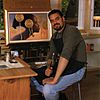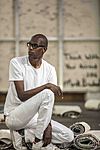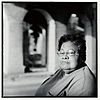Type 92 105 mm cannon facts for kids
Quick facts for kids Type 92 105 mm cannon |
|
|---|---|

Type 92 105 mm cannon
|
|
| Type | Field gun |
| Place of origin | |
| Service history | |
| In service | 1932-1945 |
| Used by | |
| Wars | Second Sino-Japanese War Soviet-Japanese Border Wars World War II |
| Production history | |
| Designer | Osaka Arsenal |
| Manufacturer | Osaka Arsenal |
| Produced | 1932-? |
| No. built | 180 |
| Specifications | |
| Mass | 3,732.3 kilograms (8,228 lb) |
| Barrel length | 4.681 metres (15 ft 4 in) L/45 |
|
|
|
| Shell | 15.77 kilograms (34 lb 12 oz) |
| Caliber | 105 mm (4.13 in) |
| Recoil | hydropneumatic |
| Carriage | split trail |
| Elevation | -5° to +45° |
| Traverse | 36° |
| Rate of fire | 6-8 rpm |
| Muzzle velocity | 760 m/s (2,493 ft/s) |
| Maximum firing range | 18,300 metres (20,000 yd) |
| Sights | panoramic |
Type 92 105 mm cannon (九二式十糎加農砲, Kyūni-shiki Jyū-senchi Kannohō), also known as a "10-cm" gun, was a cannon of the Imperial Japanese Army (IJA). It was used during World War II.
This artillery piece was used during the Second Sino-Japanese War and World War II.
It was intended to supersede the Type 14 105 mm cannon in front line combat service.
Contents
History
A Type 92 prototype was completed in 1932. Less than 200 Type92s were made.
Combat record
The cannon was first used in combat at the Battle of Nomonhan.
In 1942, it was used during the Bataan and Corregidor Island.
On Guadalcanal, the US Marines called these guns "Pistol Petes".
Related pages
Images for kids
Black History Month on Kiddle
African-American Artists you should know:
 | John T. Biggers |
 | Thomas Blackshear |
 | Mark Bradford |
 | Beverly Buchanan |

All content from Kiddle encyclopedia articles (including the article images and facts) can be freely used under Attribution-ShareAlike license, unless stated otherwise. Cite this article:
Type 92 105 mm cannon Facts for Kids. Kiddle Encyclopedia.




